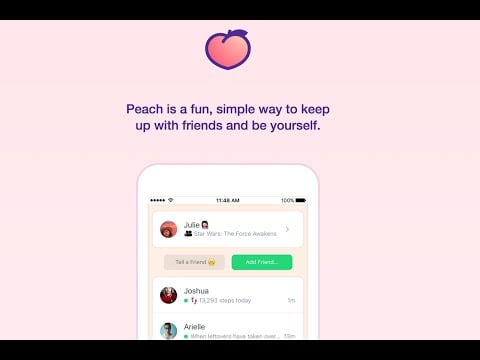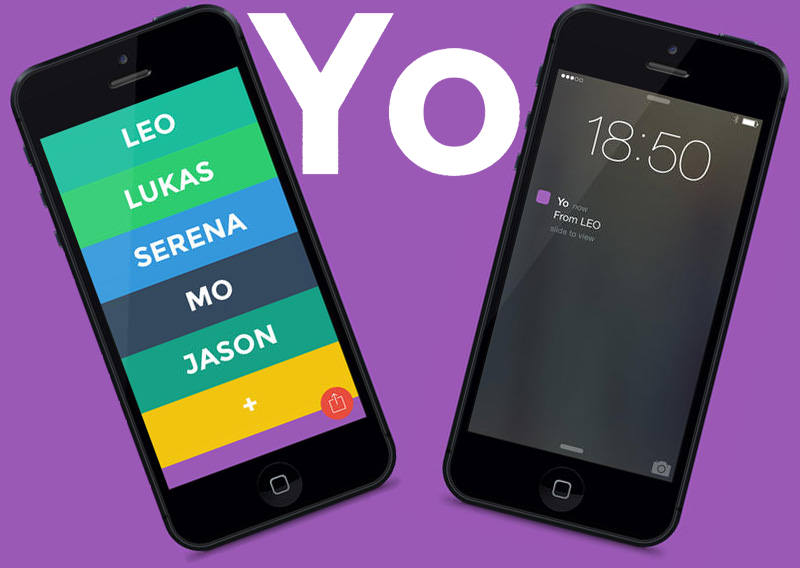When it comes to new social platforms, a brand can feel a bit like a kid in a candy store. Shiny new social startups with delicious-sounding names like Peach and Mint and Avocado, pave the way for new and unexpected opportunities to reach out to and engage consumers. Think Instagram. Think Pinterest. Think Snapchat. Once social startups, these platforms have become big players in a competitive field where brands are constantly seeking new ways interact with people as well as publish content they'll care about sharing with friends. But in a world saturated by apps, how do brands know which new apps to invest in and which ones to avoid?
Every day, developers submit over 1,000 apps to the Apple App Store. Furthermore, with more than 800,000 mobile apps available in the Apple Store, only 80 generate more than $1 million in revenue during the fourth quarter of their first year, according to research firm Distimo. In other words, if an app isn't in the Top 80 by the end of its first year, it's likely that it's a dud. With so much competition, an app must be original, have a simple user interface, and most of all, outdo what its competitors are already doing, in order to endure.
It's Apps and Peaches
The most recent example of an app creating a stir in the social sphere is Peach, a cool kid's kind of Twitter created by Dom Hofmann, one of the co-founders of Vine. With the ability to post updates that use “magic words” such as GIF (to search for a GIF within the app), here (to add your location), and draw (to make a doodle) just to name a few, the platform seemed to provide its users with a more creative and emotionally expressive outlet than its competitors. As soon as it was released on January 7th, Peach went viral. Several brands and publishers including ASOS, The Chicago Tribune and Merriam Webster jumped on the opportunity to publish creative content on the platform, claiming their own handles before squatters could steal them.
Since its release, however, it's difficult to say whether or not Peach will survive in a highly competitive social sphere where people often have a difficult time dividing their time between multiple social platforms at once. Additionally, all content published in Peach is contained within the app. There is no web app nor any way to view posts publicly. The only way to share content would be via SMS. Moreover, in order to view and share content with other users, you have to “Peach” them first, which can take a little time as you wait for them to accept your request. So, as of now, Peach isn't brand-friendly… But that doesn't mean it won't be in the future… That is, if it has a future.

Though national news outlets are still gushing about the “fun-ness” of Peach, it hasn't seemed to sustain the same pace with which it started. As of this week, it is nowhere to be seen in the top 100 apps within Apple's app store, which isn't a good sign since it's been out on the circuit for less than a month. It's safe to say that unless PR and marketing efforts or a complete redesign of the interface allow the app to surge back to the top of the charts, Peach will likely no longer be palatable to the social-savvy public.
So, how do we reconcile the shininess of a viral new app with the potential to make or break an opportunity to reach out to consumers in an entirely new way?
Anonymous Audience
Whisper. Promise. Secret. These apps sound more like lingerie stores than legitimate social platforms. Yet, as their enigmatic names suggest, these apps deliver to their users an anonymous messaging platform on which they don't have to worry about their data being shared with third parties wishing to seduce them with buzzword-y jargon. So, how have advertisers approached this new form of social?
It's been more of a question of how (and if) they should be breaking into the clandestine universe of anonymous messaging in the first place. For some, it is a means to acquire insights into their audience, that whether they like what they hear or not, can help build their advertising strategies. For others, it is a way to perhaps generate additional PR. “Like other social trends, brands can experiment with anonymous social apps as a way to test and learn within niche communities,” says Liz Whittaker, the Group Managing Director of Digital Operations at mcgarrybowen.
In the end, it is up to the brand how much time they are willing to invest in a social experiment, or rather, a situation with a lot of risk and potentially not very much reward.

How to approach shiny new apps and unexpected social opportunities…
Using the preceding examples of Peach and anonymous messaging platforms as guidance, I believe we have several avenues for approaching new social platforms.
- Sit, watch, and wait. If there aren't enough people using the app, then there's no reason why a brand should be there. Peach, for example, does not have the numbers of users yet that Facebook, Instagram and Snapchat have. Once (or rather if) it does, then a brand should watch how people use it and interact with one another on it. Like all unique social channels, a brand can only succeed if its content is tailored to its unique traits. Whether the content is inspiring photos of products on Instagram, raw and quirky stories shared with Snapchat, or DIY tutorials published on Pinterest, a brand must always adapt its voice to the channel or it won't successfully engage with its audience. So, keep a close eye on a new social channel and get some thought-starters going should you decide to pursue it in the future— it might even be a good idea to claim your handle before a squatter does. Should the social channel prove to be the next Snapchat (and is a viable and appropriate channel for your brand's message), it might be a good idea to invest time and money into creating some great content for it.

- Consider the story. Think carefully about whether or not this new channel is even relevant to your brand's message. Though shiny new apps might be appealing in theory, if the tone of the channel doesn't make sense for your brand, then it's probably best to leave it be. Additionally, you only have so many resources to spread across different social channels. If this new one isn't necessary, it may be pertinent to focus on creating quality content for the channels you already own rather than spreading yourself too thin. However, it's a good idea to keep an eye on the platform and see if, like Ello and Yo! before it, it evolves into something new and potentially brand-friendly.

- Take a chance. If you'd like to go forward and experiment like the brands that hopped on the Peach bandwagon, be aware that the time (and money) spent could potentially be a waste if no one is there to actually engage with the content. For unexpected social channels like anonymous messaging platforms, it could be a risk worth taking if you're looking to get raw and real reactions from your target audience.
A friend of mine, who wrote an article about Peach for Teen Vogue the weekend it was released, asked me earlier today why I was still writing a blog entry about it since it was claimed dead on arrival last Monday. I told her I wasn't writing about the virility of Peach, but rather to discuss how, like the hideous fashion trends of velour track suits and harem pants that Teen Vogue may have initially espoused in the past, apps can cause quite the stir at first, endorsed by brands and national news outlets alike, then suddenly disappear without a trace. Or, like the mullet that is MySpace, every once in a while will attempt to redefine itself, but with little to no avail.
In the end, it is not brands that make social platforms run, it is the people. And if there are no people giving it life, then there's no reason for a brand to be there.
What do you think? At what point should a brand approach a new social platform?


